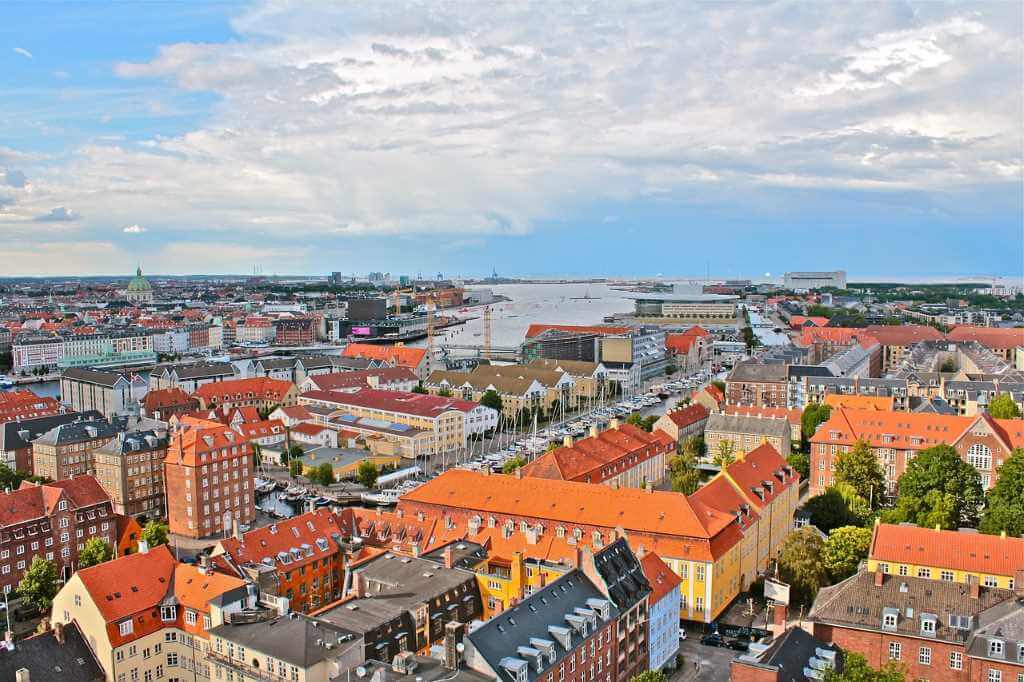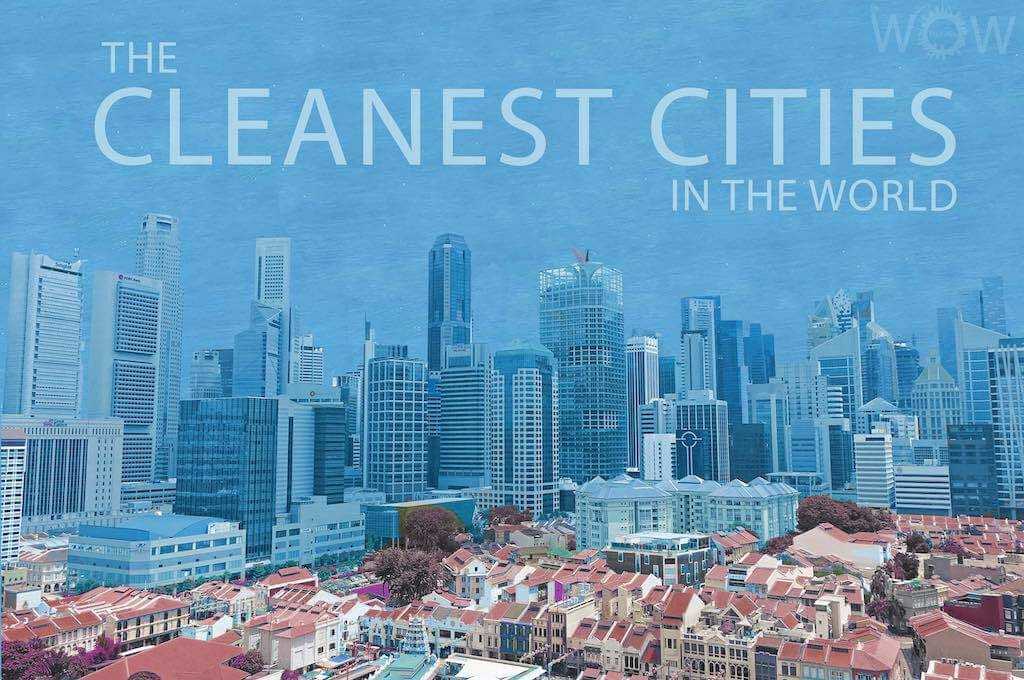People traveling around the world return home with a stash of memories captured on their cameras and in the journals they keep. The beauty and hospitality of visited places remain etched in our memories. Sometimes, however, we end up in a city that is so polluted and noisy that the holiday becomes stressful rather than an enjoyable one. The ‘squeaky clean’ cities listed below will make you want to return to their clean environs. These 12 cities below have made it to the list of the cleanest cities in the world based on air quality, garbage disposal, traffic congestion, drinkability of water, and sewage systems. For comparison, check out the 12 Most Polluted Cities In The World.
Table of contents
Copenhagen, Denmark
1
According to the European Environmental Bureau, Copenhagen ranks second only to Zurich regarding air pollution. Copenhagen stands out as a clean city because of its air quality, and the government aims to make the capital city carbon neutral by 2025.
Numerous measures have been put in place to decrease littering, with various initiatives for waste management and recycling. The green initiatives implemented by the government are quite impressive, especially the long-term plan that the government has of making the capital the most bike-friendly city in the world. This puts Copenhagen at the top of our list of the cleanest cities in the world.

Singapore City, Singapore
2
A few decades ago, the city of Singapore could probably have featured in the list of dirtiest cities in the world. However, strict laws and heavy fines imposed on citizens for cleaning up their environment have transformed Singapore into one of the cleanest cities, not only in Asia but also globally.
Singapore has one of the best public services in the world, and the heavy tax levied on car owners has deterred many from purchasing a car leading to a cleaner environment. There are at least 56,000 registered cleaners around the city.

Helsinki, Finland
3
Finland’s capital is a popular tourist destination because of its beautiful surroundings. However, for a few years now, Helsinki has been featured on the list of clean cities. The city’s water is so clean that it can be had straight from the tap. Meanwhile, the air quality in the city center was good.
The government has taken big strides to make the city environmentally friendly, especially in electricity production. One of the chief reasons the air quality is so pristine is that the locals have ditched their cars for cycles. As one of the cleanest cities in the world, Helsinki has about 2400 miles of lanes dedicated to cyclists. Besides, the government aims to make motor vehicle ownership obsolete by 2025.

Brisbane, Australia
4
Called the city of the sun, sea, and sand, Brisbane is located on Australia’s east coast. Brisbane is one of the cleanest cities, even though it is the third most populated city in Australia. The range of green spaces, nature reserves, and parks have contributed to reducing pollution levels. Brisbane’s proximity to the sea helps keep the pollution levels under control as well.
The Brisbane administration has set various goals to keep the city clean and green. In addition, the improved public transport system and driving encourage more people to use public transport. It helps reduce congestion and keep pollution levels low. Brisbane is also a gay-friendly city. Check out our Top 11 Gay-Friendly Hotels in Brisbane to find out more.

Hamburg, Germany
5
The second biggest city in Germany has taken big steps in ensuring a clean and pristine environment. Hamburg has an excellent infrastructure for cyclists, which helps curb rising levels of pollution as there are more cyclists and fewer private vehicles on the streets. Therefore, it’s not surprising that Hamburg ranked among the world’s cleanest cities. The Green Network, a proposal to make the city car-free in two decades, is also quite impressive. Moreover, the government plans to reduce its carbon emissions by 80% by 2050.

Stockholm, Sweden
6
Another Scandinavian nation on our list of the cleanest cities in the world is Stockholm. Stockholm has the distinction of being crowned the first European Green Capital in 2010 because of the city’s green initiatives.
The city, however, did not rest on its laurels and has continued to take positive steps toward maintaining a healthy environment by slashing carbon emissions by 25 percent. Stockholm also has a strong culture of cycling, which has helped reduce air pollution to a large extent. The city hopes to become fossil fuel-free by increasing biodiversity, slashing waste, and working on better public transport by 2050.

Sapporo, Japan
7
Sapporo is the capital city and largest city in Hokkaido and the fifth-largest city in Japan. But, despite the large population, it has still managed to make it to the list of the cleanest city of the world. It’s probably because of the many green spaces in the city. Like most Japanese cities, Sapporo also uses environment-friendly automobiles and has a good sewage system.
The Japanese are taught the value of cleanliness from the school level, where students have to clean their classrooms. Therefore, no surprise that quite a few Japanese cities make it to the list of cleanest cities in the world. Enjoy the clear sky and cleanliness of the best hotels in Sapporo.

Calgary, Canada
8
Calgary, a cosmopolitan city in Alberta, is a leader in the Canadian oil and gas industry. Even so, it’s cleaner than Toronto. Its downtown area boasts skyscrapers and the best hotels in town. But, despite this, it has continuously made it to the list of the cleanest cities in the world.
Very few cities in North America can match the green initiatives that Calgary has implemented. There are heavy fines for littering, and a big educational effort to increase composting and recycling has ensured an almost 80 percent reduction in landfill usage over the next few years.

Wellington, New Zealand
9
As the capital of New Zealand, Wellington may not be a vast city with fewer than half a million inhabitants, but it is still one of the most populated cities in New Zealand. One of the outstanding features of this city that has contributed to keeping the air pollution low is that at least 33% of its inhabitants use public transport. Hence, this city is considered one of the world’s cleanest cities.
The Wellington authorities have also undertaken various waste management and energy efficiency programs to help cut down on the city’s carbon dioxide emissions. This city with clean air is perfect for anything, from spotting some wildlife to sunbathing on the beach. Moreover, you get to enjoy the clear air from one of the 11 Best Hotels in Wellington.

Honolulu, Hawaii
10
Honolulu is a tropical paradise and eco-conscious city. Besides, there are not many polluting industries in the city. Hence, Honolulu has managed to control the quality of its air. The city also benefits from being close to the ocean as the Pacific winds that blow over the area sweep out the small number of emissions from the hotels and traffic. Added to this, regular rainfall helps keep the air free from pollutants.
The government has done its bit to maintain and beautify the city’s public spaces. The abundant green spaces and the no-litter policy contribute to the city’s cleanliness, too.
Besides being one of the cleanest, Honolulu is also a gay-friendly city. Find the best gay-friendly hotels in Honolulu here.

Tallinn, Estonia
11
With around 430,000 people, the capital of Estonia, Tallinn, is known as one of the cleanest cities in the world. This medieval city has narrow cobbled streets and imposing walls. Besides, it’s one of the most livable cities in Europe.
The city built such a long time ago did not envision big vehicles driving around. So, cars have stayed away from the ancient city center, resulting in low pollution levels. The greenery around the city also contributes to lower levels of carbon dioxide. In addition, almost every household recycles waste paper to reduce landfill levels.

Oslo, Norway
12
Oslo has been recognized by many as the cleanest city of the world. The capital of Norway is known for its green spaces and ski-jumping hill with panoramic views of the fjord. Keeping the city clean comes instinctively to the residents of Oslo as its part of the local culture.
Even though there are no visible trash cans on the streets, the waste is managed by an automatic trash disposal system. Pumps and pipes are used to move the trash underground to incinerators. The trash is then burned and used to create energy for heating the city. There are annual volunteer clean-up days to involve citizens in cleaning up the city and an anti-littering mascot who suddenly appears on the streets to remind people to keep the city clean.

So, what are the cleanest cities in the world in a nutshell?
Copenhagen city of Denmark sits at the top, followed by Singapore, Helsinki, Brisbane, Hamburg, Stockholm, Sapporo, Calgary, Wellington, Honolulu, Tallinn, and Oslo. However, these rankings are not official. We curated our list based on many factors in choosing the world’s cleanest city: environmental performance score, Mercer quality of living, clean city score, development, and population. We also take their popularity among other travel destinations into our consideration.
Which country has the cleanest air?
According to the report released Tuesday by IQAir, a Swiss company that makes air quality monitors and air purification technologies in 2021, the cleanest air was found in New Caledonia. It’s a French territory with dozens of South Pacific islands and a small population. New Caledonia has a 3.8 index of clean air, with Finland having the lowest PM2.5 concentrations.
Which country has no pollution?
Cape Verde, the Caribbean Netherlands (Bonaire, Sint Eustatius, and Saba), and Finland are the top three of the world’s least polluted countries. These three countries and island countries have low levels of PM2.5.
What is the cleanest place on earth?
According to researchers at Yale University and Columbia University collaborated with the World Economic Forum, the cleanest place on earth is Finland. This country rank first in the world for Environmental Health (99.3) and Air Quality (98.8), as well as achieving perfect 100s for sanitation and drinking water and heavy metals exposure.
